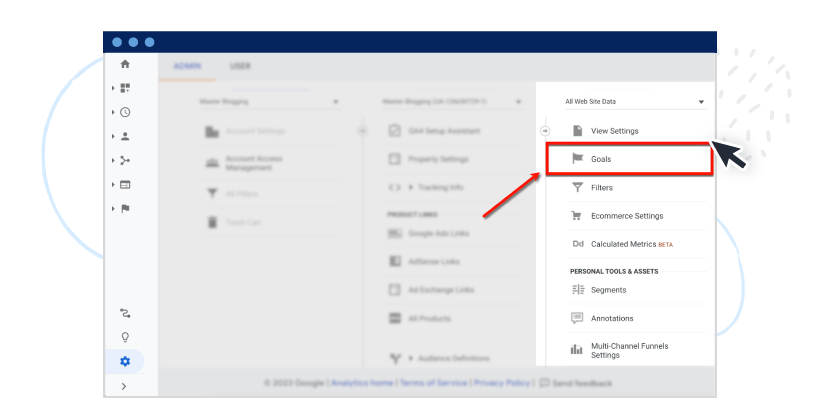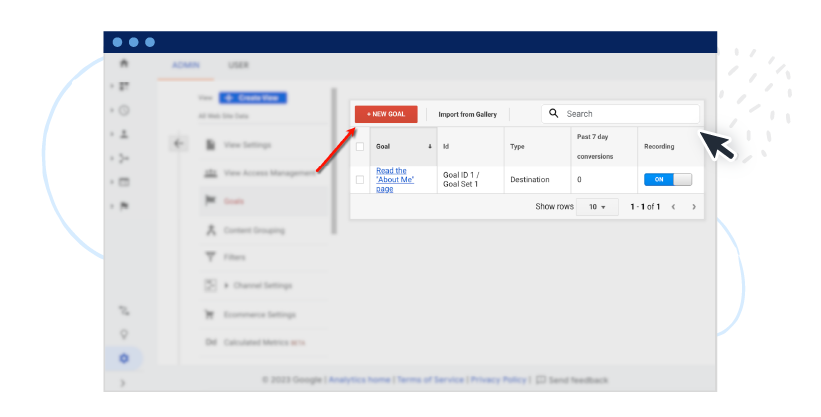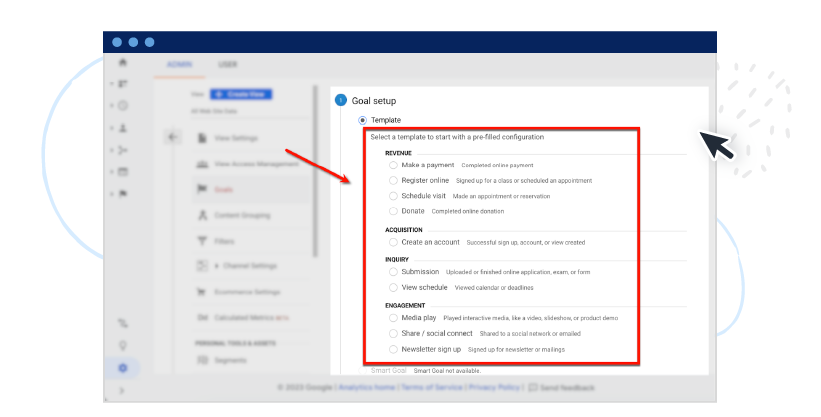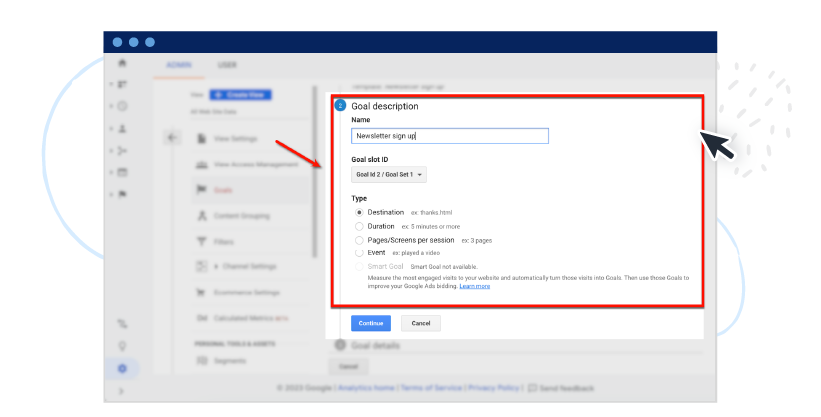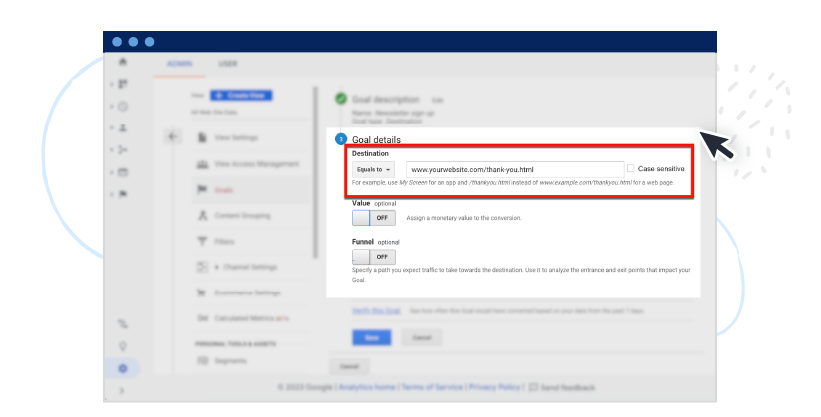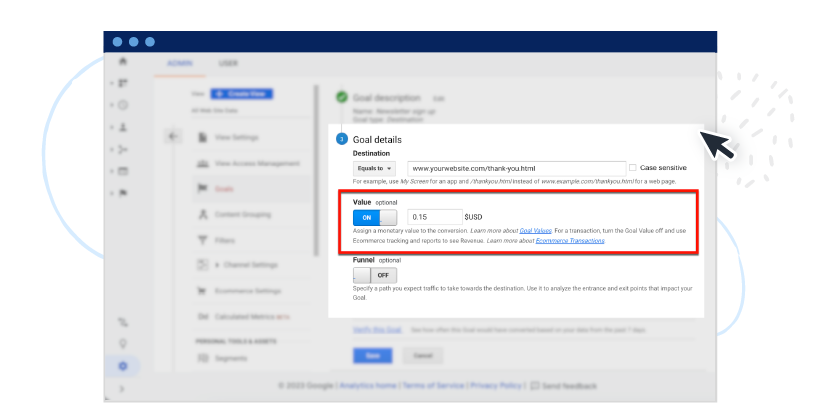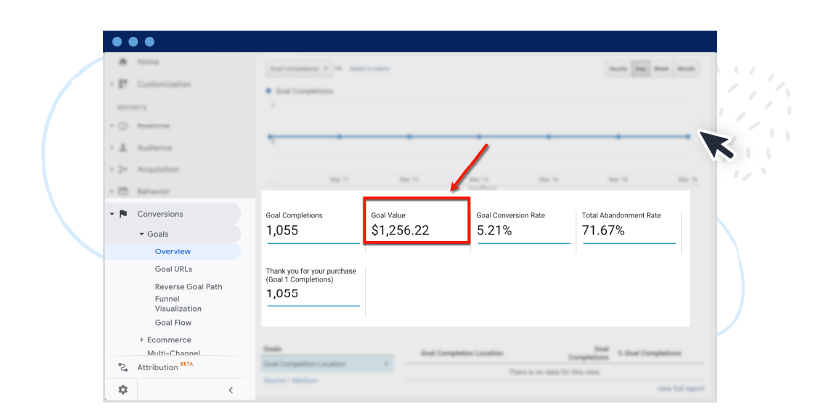Let’s face it: Running a successful content marketing campaign isn’t cheap.
You need to invest a significant amount of resources and time to see meaningful results from your content marketing efforts. If you plan to invest thousands of dollars in content marketing, you need to learn how to measure content marketing ROI.
Tracking content ROI allows you to evaluate the effectiveness of your campaigns. Enabling you to invest more in your high-performing campaigns while shutting down or improving your least-performing ones.

What is content marketing ROI?
Content marketing return on investment (ROI) compares revenue from a content campaign against its cost. It’s a reliable measure of content marketing success as it highlights actual earnings (or losses) after expenses.
To calculate content marketing ROI, get your revenue and subtract the costs. Divide it by the costs and multiply the result by 100.
ROI = ((Revenue – Costs) / Costs) * 100
When it comes to content marketing ROI, your costs should include the following:
- Cost of content production
- Cost of content distribution
- Content marketing tools
Content marketing revenue, on the other hand, is trickier to calculate.
Unlike in advertising, profits from content marketing aren’t straightforward. After all, buyer journeys through content campaigns can take days or even months while having a myriad of Touchpoints. (Take a look at monthly recurring revenue.)
That’s why content marketing ROI shouldn’t revolve purely around sales. It should also focus on leading indicators of success, including different conversion stages.
What are content conversion categories?
Content marketing funnels don’t always result in sales. But they always end with a conversion step that could lead to eventual revenue.
Some examples of these content marketing conversion categories are:
- Free trial registrations
- Demo bookings
- Email subscriptions
- Resource downloads
- Forum memberships
You can use past data to estimate potential revenue from individual conversion steps.
Let’s say you made $1,500 in sales from 10,000 email subscribers last month. If you divide your profits by your total subscribers, you get $0.15.
That’s your revenue per subscriber (RPS). This metric lets you attach value to new email subscribers.
For example, if your content marketing generated 13,000 new subscribers this month, that’s a potential revenue of $1,950 (new subscribers multiplied by RPS).
Justifying content value through attribution
Remember that customers may pass through several conversion steps before making a purchase. So, some marketers use a linear model of sales attribution when calculating the ROI of their content marketing.
This model gives equal credit to all pieces of content in a conversion path.
You can use platforms like Google Analytics to track conversions with the linear attribution model.
Other multi-touch attribution models are:
- Position based. In this attribution model, Google Analytics assigns 40% credit each to the first and last Touchpoints. The remaining 20% gets spread equally across all content interactions in between.
- Time decay. This attribution model assigns most of the credit to the closest touchpoint. Multiple content pieces may get credit if they’re accessed within hours of conversion.
- Data-driven attribution. Use Google’s Machine Learning (ML) tool to track cross-channel conversion paths. This is available through the “Attribution” tool, which is in its beta stage as of writing.
Tracking ROI with Google Analytics
Follow the steps below to track content marketing ROI with Google Analytics:
1. Set up conversion goals
In order to calculate ROI, you need to specify your content conversion goals and assign their values. On Google Analytics, go to ‘Admin’ and click ‘Goals.’
Image Source: Analytics.Google.com
Click ‘New Goal’ to define a custom conversion goal from scratch. Alternatively, click Import from gallery’ to use a pre-built conversion from the Google Analytics Solutions Gallery.
Image Source: Analytics.Google.com
When creating a conversion goal manually, you can choose a pre-configured template to save time. Alternatively, choose ‘Custom’ to build a conversion goal from scratch.
Image Source: Analytics.Google.com
Click ‘Continue’ and fill in the description of your conversion goal. This includes the conversion’s name, “Goal slot ID,” and tracking type.
Image Source: Analytics.Google.com
When done, click ‘Continue’ to proceed to the last step.
Under “Goal details,” configure the conversion tracking type you specified earlier. For example, if you used the “Destination” tracking type, enter the URL of the page that opens after a conversion.
Image Source: Analytics.Google.com
To assign a conversion value, click the ‘Value’ toggle and enter the goal’s monetary value. This can be the price of your product, service, or another revenue-related metric.
For example, if you’re tracking email signups, enter your RPS.
Image Source: Analytics.Google.com
Click ‘Verify this goal’ to check if your conversion goal is correctly configured. When done, click ‘Save’ to start tracking this goal.
Repeat the steps above for all content conversion categories that apply to your website.
2. Track your revenue
Google Analytics consolidates all conversion values in the goals overview report.
From your dashboard, click ‘Conversions,’ go to ‘Goals,’ and select ‘Overview.’
Select ‘Month’ above the timeline to track conversion goals in the past 30 days. Your overall content marketing revenue shows up under “Goal Value.”
Image Source: Analytics.Google.com
3. Use the ROI formula
Using the goal value metric, calculate your returns using the ROI formula.
Suppose your content marketing expenses last month amounted to $700.
With a goal value of $1,256.22, you can calculate your content marketing ROI as follows:
ROI = ((1,256.22 – 700) / 700) * 100)
= 0.7946 * 100
ROI = 79.46%
Frequently Asked Questions
What are the 4 steps involved in measuring content marketing ROI?
Steps in measuring content marketing ROI:
- Calculate your content marketing costs (production, tools, and distribution).
- Use tools like Google Analytics to measure total content marketing revenue.
- Subtract your content marketing costs from your revenue.
- Divide the result by your content marketing costs and multiply the result by 100.
What is the average ROI for content marketing?
The average ROI of content marketing changes based on various considerations. The channel you choose for marketing your content, for example, would yield different results. According to WebsiteBuilderExpert, email marketing has an average ROI of 3,600%. Whereas, SEO has an ROI of 2,200%.
How do you measure ROI in social media marketing
To calculate your social media marketing ROI, subtract your expenses from revenue attributed to social media campaigns. Divide the answer by your expenses and multiply it by 100 to get your ROI.
What are the three key components for assessing the ROI of your content marketing efforts?
The three components for assessing content marketing ROI:
- Conversion categories and values
- Conversion path
- Content marketing costs
Drive meaningful business results with your content
Tracking ROI lets you determine the effectiveness and viability of your content marketing campaigns. Apart from justifying campaign costs, it’s also useful in evaluating individual conversion paths.
However, ROI is just a number if you don’t develop plans to improve it.
That’s where ClearVoice comes in.
With years of experience and a network of seasoned content experts, ClearVoice can help you create sustainable, high-performing content. Get in touch with us today to get help with content production!

